Owning the Why: Human Agency in an Age of Autonomous How
From Director to Meta-Manager: Guiding fleets of AI agents without losing the plot—or your reputation.
Executive Summary
For executives navigating the AI revolution, your competitive advantage rapidly shifts from technical expertise to purpose, initiative, and accountability. The leaders who thrive won't be those with the best AI tools, but those who master the art of directing these tools toward meaningful outcomes while maintaining clear ownership of results.
The Uncomfortable Truth
I've stopped asking whether an AI could outperform me at a task. The answer is almost always "yes, or soon will be." So the real question becomes: why do this task at all, who takes the risk, and what bigger story am I trying to tell?
What keeps me up at night isn't résumé relevance (we'll all learn new tools), but agency: the right—and responsibility—to decide what should be done, marshal the resources to do it, and stake reputation on outcomes. If we surrender that, we risk replacing human purpose with a swarm of well-intentioned but misdirected bots.
Strategic insight: As AI capabilities accelerate, the locus of value creation shifts from technical execution to three uniquely human moats: Vision, Will, and Reputation.
The Three Moats Explained
Vision (Why)
Vision isn't about predicting the future—it's about choosing which future deserves to exist. It encompasses:
Problem selection: Most problems aren't worth solving; discernment about which ones deserve resources is quintessentially human
Success framing: Defining what "good" looks like in human terms, not just metrics
Ethical boundaries: Setting guardrails for what should never happen, regardless of efficiency
Taste: The intuitive recognition of excellence that precedes articulation
AI can't originate vision because it lacks intrinsic values. When we outsource "why" decisions to algorithms, we get efficiency without direction—faster movement toward unclear destinations.
Will (To Act)
Will transforms vision from concept to reality through:
Stakeholder persuasion: Building coalitions around a vision despite initial resistance
Resource acquisition: Securing budget, talent, and time against competing priorities
Blocker removal: Navigating organizational politics and regulatory constraints
Persistence: Maintaining momentum through setbacks and uncertainty
AI can optimize within constraints but struggles to change those constraints. It can't have the difficult conversation with your board about shifting strategic priorities or convince your top talent to postpone vacation for a critical launch.
Reputation (To Own)
Reputation represents the ultimate accountability mechanism:
Career capital: Your professional brand rises or falls with outcomes
Organizational trust: Teams align behind leaders who "own" results, good or bad
Market confidence: External stakeholders (customers, investors, regulators) need human guarantors
Learning integration: Personal growth comes from the visceral experience of success and failure
AI systems have no skin in the game. They can't feel the sting of failure or build trust through consistent delivery. When difficult trade-offs must be made, there's no substitute for a human willing to say, "I made this call, and I stand by it."
Executive implication: Organizations that delegate "how" while strengthening human ownership of "why" will outperform those that surrender agency in pursuit of automation.
Agency² — Managing the Managers
Owning an agent isn't delegating a task; it's designing a miniature organization with its own purpose, authorities, and feedback loops.
The Agency Paradox: As AI agents assume more responsibility, your own agency must evolve from direct execution to meta-management—designing systems of delegation that preserve human vision, will, and reputation.
The RAISE Framework
Before launching any agent-driven initiative, complete this checklist:
Leadership imperative: Agents without clear RAISE parameters don't reduce your workload—they multiply it through misalignment, requiring constant course correction.
Metaphors That Stick
To navigate this transition, executives need mental models that clarify rather than obscure the new division of labor. Three roles offer particularly useful parallels:
The Director's Approach
Directors don't operate cameras or design costumes—they articulate a coherent vision that guides specialists. Similarly, modern executives:
Craft compelling narratives that bind disparate activities
Make judgment calls about what "feels right" based on audience needs
Assemble the right talent and create conditions for their success
Take ultimate responsibility for the final product
Question for leaders: Which hat are you wearing with your AI agents today? Are you directing with purpose or merely reviewing dailies after the fact?
Playbook for Leaders
Five practical moves to strengthen your agency while embracing AI capabilities:
1. Codify your "why" in strategic prompts
Action: For every major AI initiative, craft and circulate a one-page vision statement answering: Why this? Why now? What does success look like in human terms?
Implementation: Pin this vision atop system prompts and requirement documents; review quarterly for drift
Benefit: Creates a compass that prevents technical efficiency from becoming strategic distraction
2. Embed reputation mechanics in agent workflows
Action: Require named accountability for every significant AI deployment; add leader photos to dashboards
Implementation: Design review gates where humans explicitly approve key decisions or outputs
Benefit: When your face (and career) is attached to performance, oversight becomes instinctive
3. Institute "agency audits" for critical systems
Action: Quarterly review who's really making decisions vs. who's nominally responsible
Implementation: Map every key business outcome to its true decision-maker (human or AI)
Benefit: Prevents gradual abdication through convenience; highlights "accountability gaps"
4. Create escalation rituals with teeth
Action: Establish clear human-intervention triggers for all autonomous systems
Implementation: Conduct "fire drills" where agents must escalate ambiguous scenarios to humans
Benefit: Maintains the muscle memory of human judgment in increasingly automated environments
5. Build "vision resonance" into evaluation cycles
Action: Rate agent performance on alignment with purpose, not just technical metrics
Implementation: Regular reviews where stakeholders assess how well outputs serve the original "why"
Benefit: Prevents the common trap where agents optimize for measurable outcomes at the expense of unmeasurable purpose
Executive insight: The most valuable AI implementations aren't those with the most advanced models, but those with the clearest human oversight mechanisms.
Call to Action
Over the next two weeks:
Select one recurring meeting where decisions are increasingly data-driven or AI-influenced
Reframe its agenda explicitly around:
Vision: Are we still solving the right problem?
Will: What resources or stakeholder alignment do we need?
Reputation: Who stands behind these outcomes?
Identify which elements could be delegated to agents while strengthening human ownership of the above
Final Thought
AI will continue sprinting ahead on the "how." But the "why" remains stubbornly, wonderfully human.
The executives who thrive won't compete with AI on execution, but those who excel at direction—setting meaningful destinations, aligning resources behind the journey, and taking ownership of arrival.
The credits are still rolling. Make sure your name deserves its place.


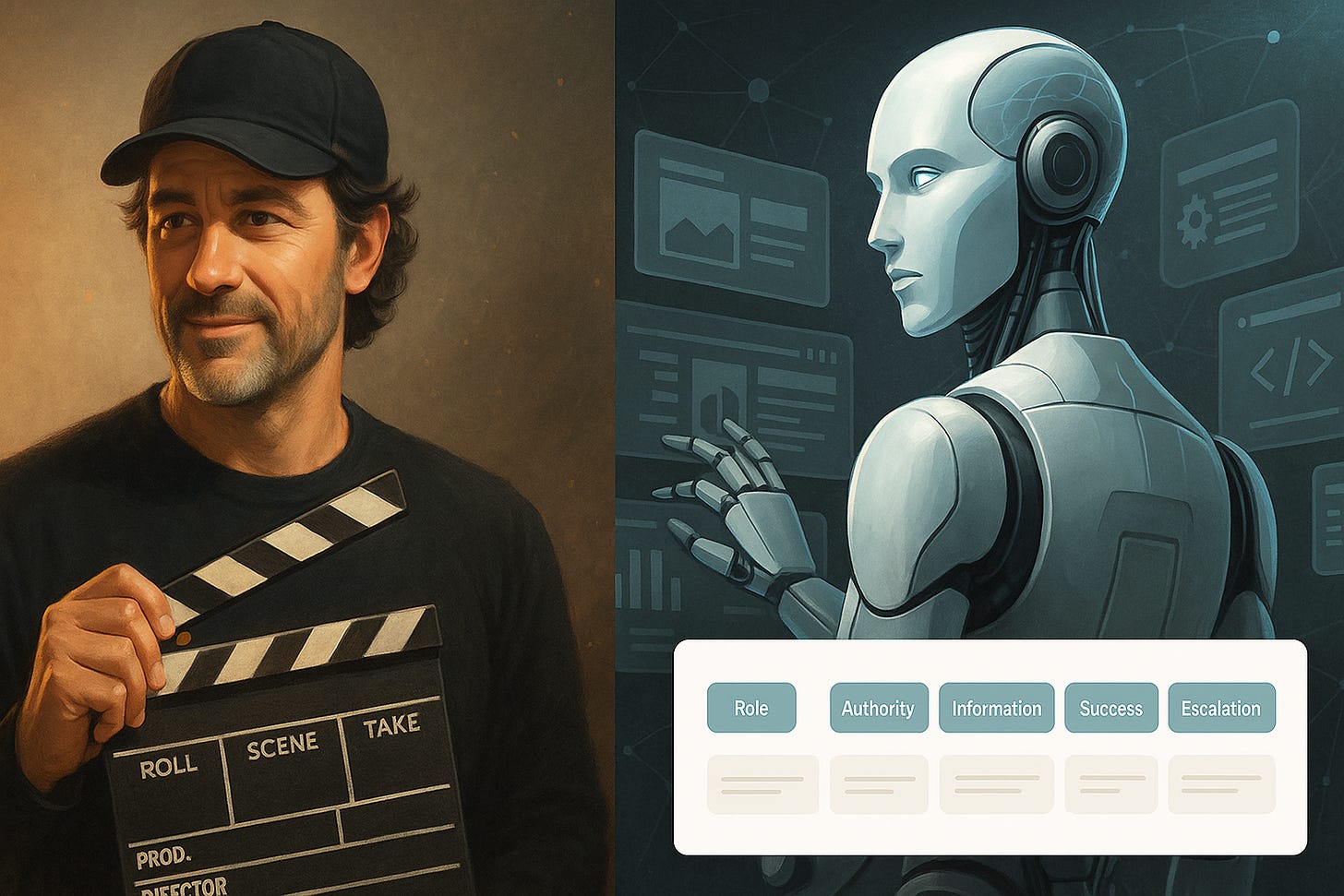
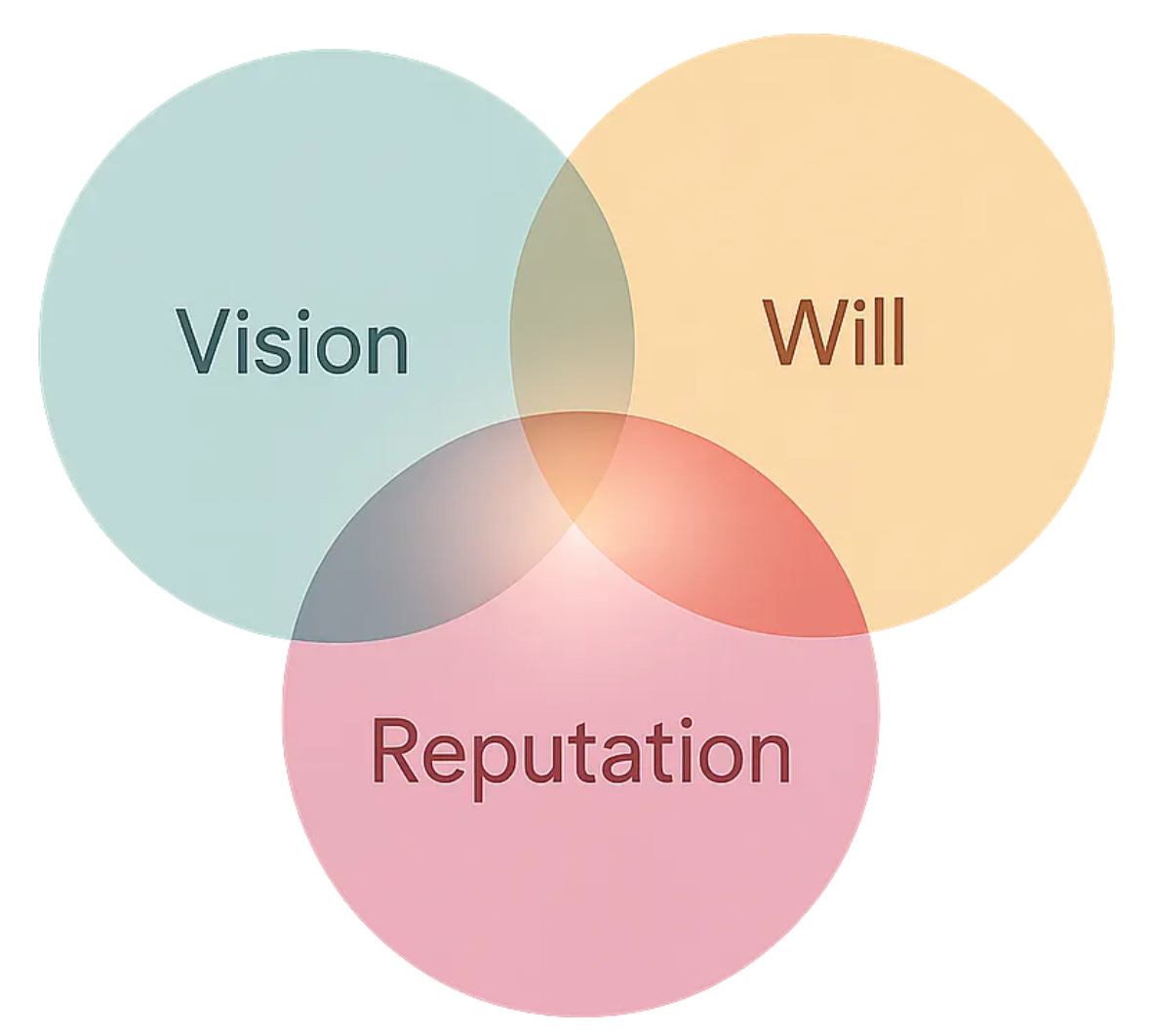
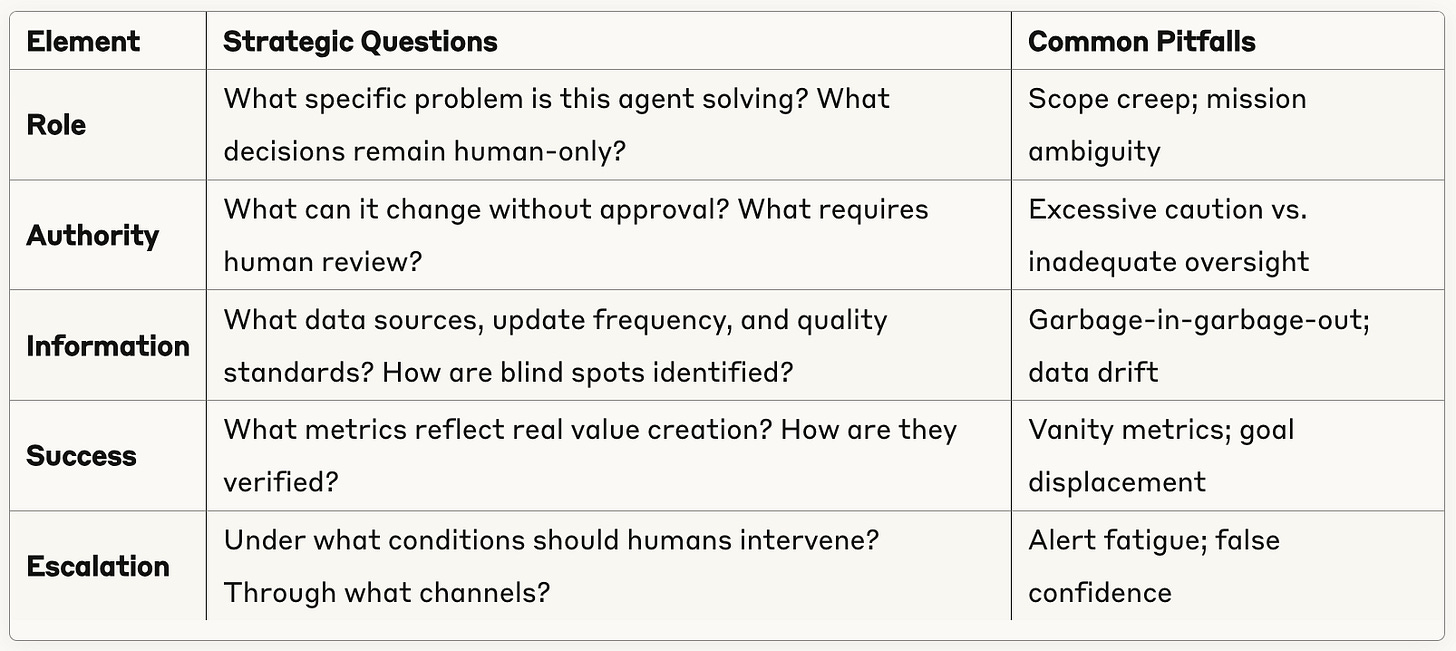
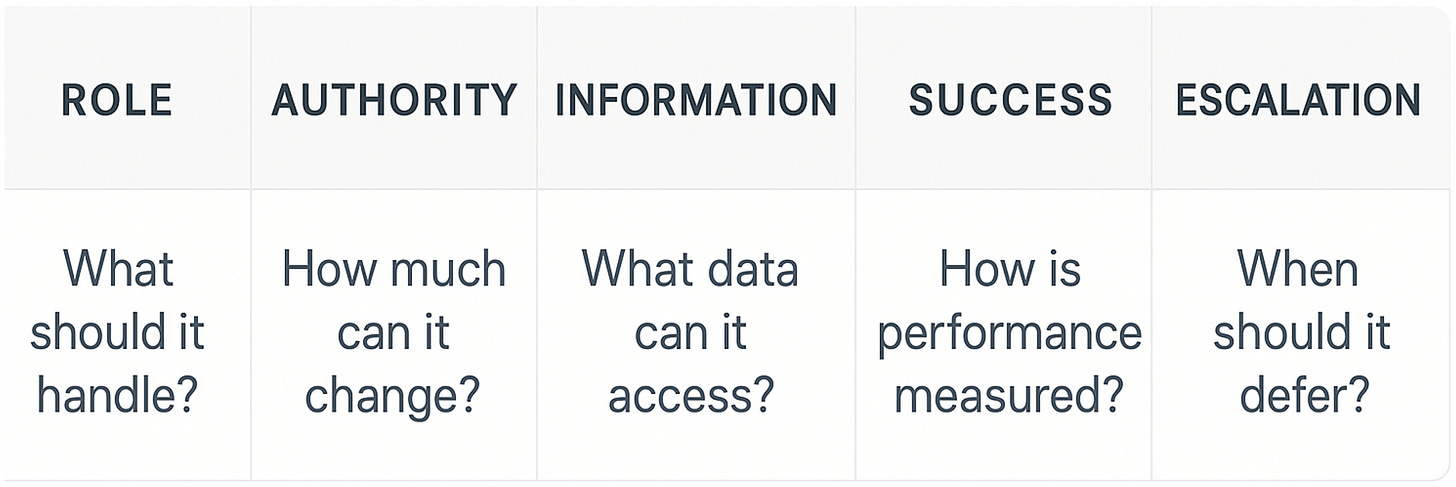
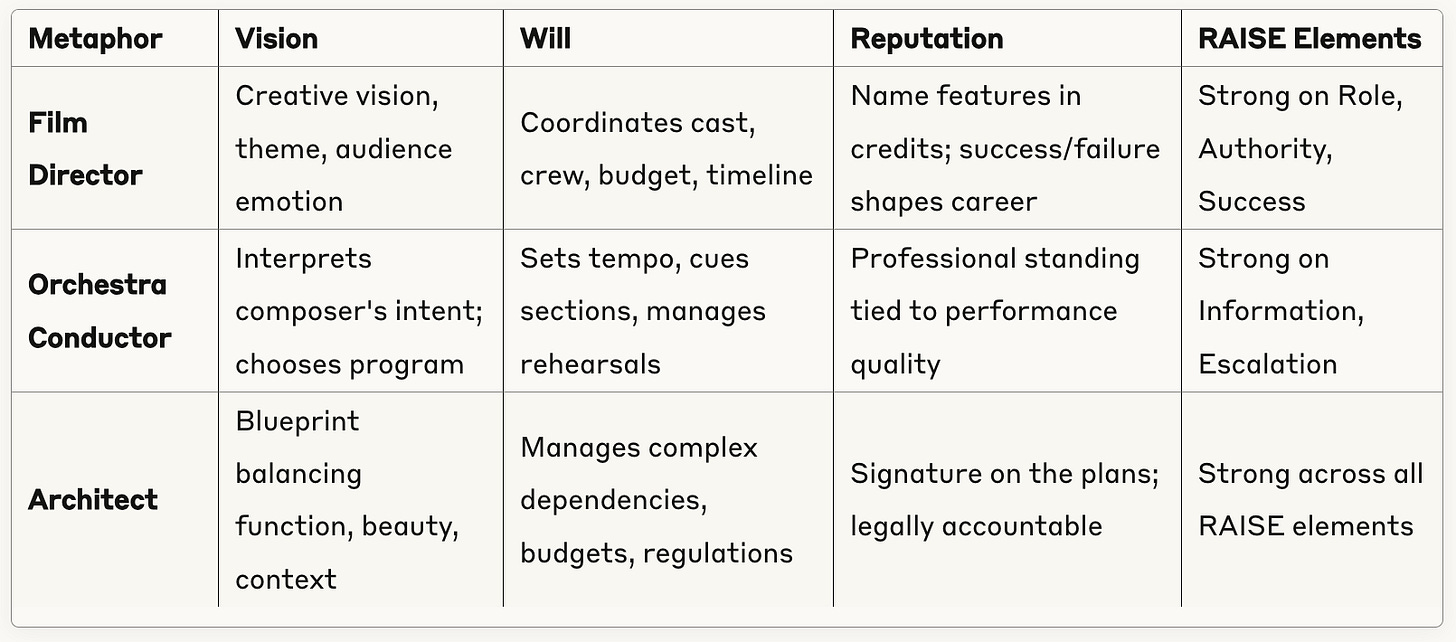
My favorite rule of the above 3, the "Agency Audit". We have amazing tools in AI. I agree with your foundational statement, there are fewer things I can do better than AI. Therefore, it is necessary to structure the human role in each AI task. No one wants abdication.
Interesting read Justin.
Fully agree that competitive advantage shifts from technicalities to purpose and accountability which are human traits.
Today I see two technical limitations that still need to be overcome -
1. Hallucinations - required in systems and outputs where precision is required.
2. World Model - LLMs don't operate like you and me. The know which words predict which other words in the context of words. They don’t have what people like Yann LeCun or Judea Pearl would call a world model. And I believe this is where Vision, Reputation and Will may sit.
So for tasks where precision is not required or there is no need for a world model (protein folding) Ai excels well beyond human capabilities. The world we live in is a gnarly place - humans since the birth of civilization have tried to standardise and control it.